Key takeaways:
- Effective teaching requires recognizing diverse learning styles and adapting methods accordingly to foster engagement.
- Facilitating open dialogue around differing beliefs can enhance the learning experience and promote deeper understanding in religious education.
- Incorporating technology and collaborative learning strategies enhances student interest and caters to various learning preferences.
- Embracing vulnerability and self-reflection in teaching can build a supportive classroom environment that encourages authentic sharing and connection.

Understanding teaching styles in education
Teaching styles play a crucial role in how effectively we communicate and connect with our students. I remember my early days in the classroom, where I often felt like I was merely delivering information rather than truly engaging. It made me wonder, how can I create an environment where my students feel empowered to explore their own understanding of faith?
A diverse range of teaching styles exists, from authoritative to collaborative, each bringing unique strengths to the learning process. I’ve found that incorporating elements of discussion-based learning not only sparks interest but also encourages students to articulate their beliefs and challenge their perspectives. How often do we pause to reflect on our own teaching approach and its impact on our students’ spiritual journeys?
Recognizing that each student learns differently has been a game changer for me. While some thrive in a hands-on, experiential environment, others might prefer structured lessons. This realization pushes me to adapt my methods continuously, ensuring that I cater to varied learning preferences. Have you ever noticed how a slight shift in your approach can transform a student’s engagement?
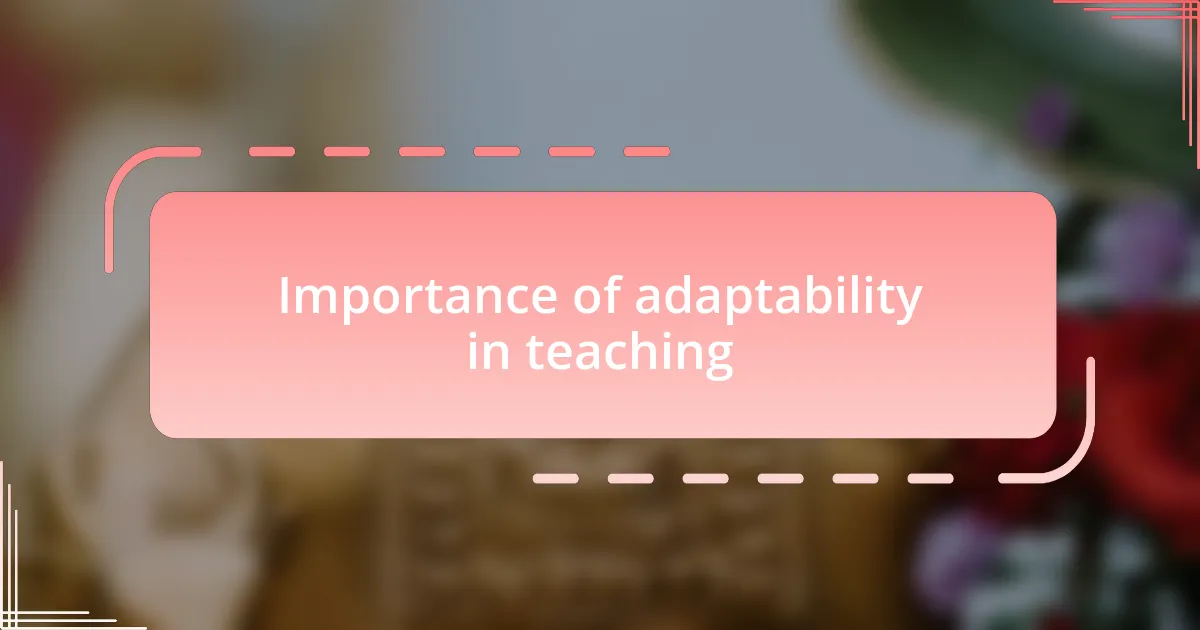
Importance of adaptability in teaching
The ability to adapt in teaching is essential for fostering a dynamic learning environment. I recall a particular class where I shifted my lesson plan on religious texts after sensing a lack of enthusiasm. By introducing a creative project where students could express their understanding through art, I witnessed a remarkable shift in engagement. When was the last time you altered your approach based on your students’ energy?
Students come from diverse backgrounds, each with their own set of beliefs and experiences. I often encounter students who bring unique perspectives that challenge my own understanding of faith. It’s in these moments that adaptability shines; I’ve learned to embrace their insights, allowing our discussions to deepen rather than constrict. How often can we say our students have taught us just as much as we’ve taught them?
To me, adaptability also means being attuned to the rhythm of the classroom. There are days when a structured lesson might be needed, and other days when a more relaxed, open-ended discussion works wonders. Embracing this fluidity allows me to connect with my students on a personal level, making the learning experience more relatable. Have you found that responding to a classroom’s unique pulse can lead to richer conversations?
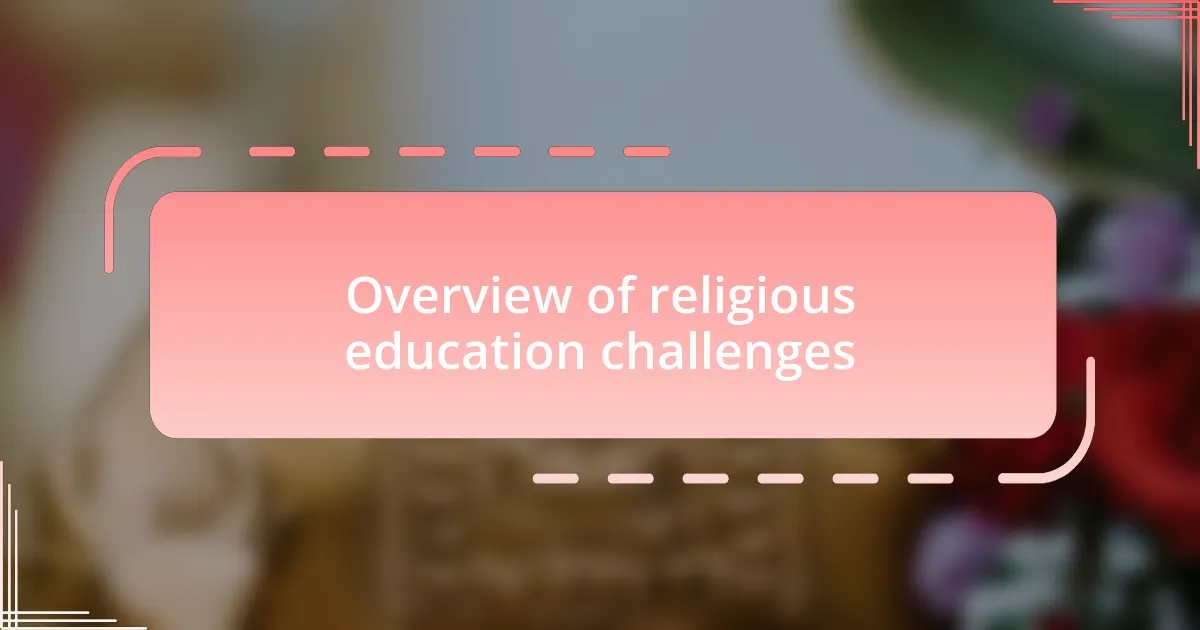
Overview of religious education challenges
Religious education often faces significant challenges, primarily due to the diverse and sometimes conflicting beliefs of students. I remember one instance where a heated discussion arose about different interpretations of sacred texts. Instead of steering away from the conflict, I chose to facilitate an open dialogue. This experience reminded me that engaging with differing viewpoints can actually enrich the learning experience. How can we turn disagreements into opportunities for deeper understanding?
Another challenge is the varying levels of prior knowledge among students. I’ve observed that some students come in with a wealth of background in religious studies, while others may have little to no exposure. This disparity can lead to frustration on both sides. I found it effective to gauge students’ familiarity first, allowing for tailored lessons that either build on their existing knowledge or introduce fundamental concepts in an accessible way. Isn’t it fascinating how starting from a shared foundation can bridge gaps in understanding?
Cultural sensitivities also pose obstacles in religious education. I once taught a lesson on a controversial practice, and the room became unusually tense. By acknowledging these sensitivities and creating a safe space for students to voice their thoughts, I turned what could have been a divisive moment into a powerful discussion about respect and empathy. Have you noticed how approaching sensitive topics with care can transform the classroom atmosphere?
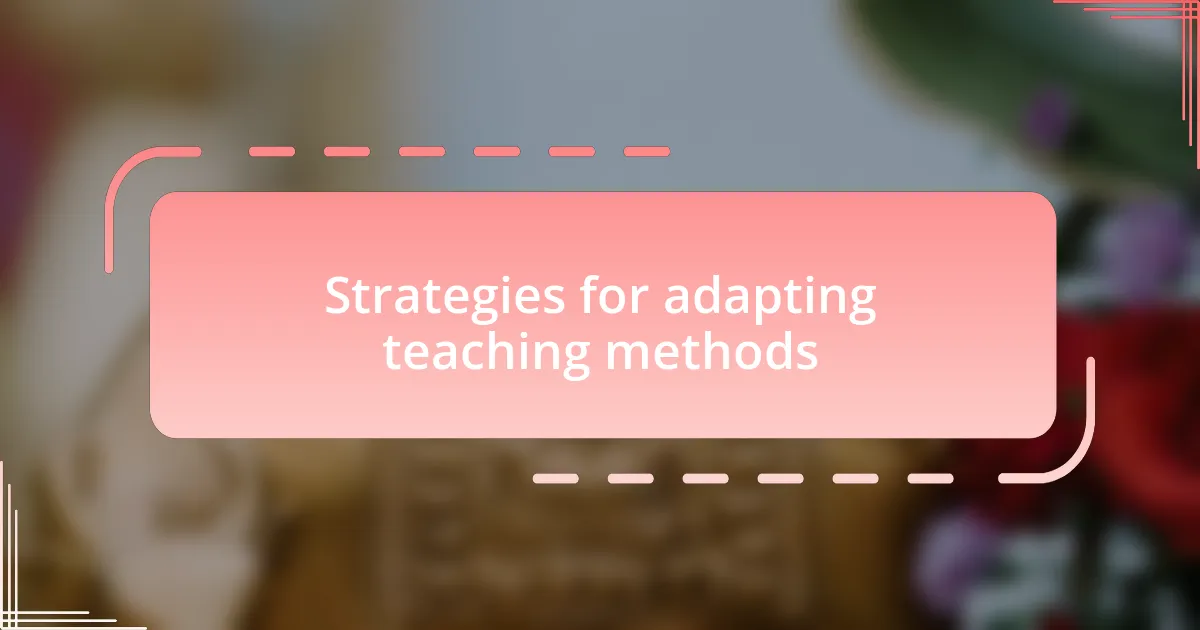
Strategies for adapting teaching methods
To adapt my teaching methods effectively, I often employ collaborative learning strategies. For instance, I once paired students from different backgrounds to work on a project about religious practices. Watching them share their unique perspectives made me realize how much they could learn from each other, fostering not just knowledge but also mutual respect. Have you ever witnessed the magic that happens when students engage with one another on a personal level?
Incorporating technology into my lessons has also proven beneficial. I remember using multimedia presentations to illustrate complex themes in a relatable way. These visuals not only captured the students’ attention but also catered to different learning styles, from visual learners to auditory ones. Isn’t it remarkable how a well-placed video can spark curiosity and deepen understanding in ways a textbook sometimes can’t?
Additionally, I find it valuable to create flexible lesson plans that can be adjusted on the spot. During one class, I noticed that students were more interested in discussing a recent religious event than the scheduled topic. Rather than sticking to my original plan, I opted to pivot and explore the current issue. That decision turned an ordinary lesson into a lively discussion, reminding me that sometimes, following the students’ interests leads to richer educational experiences. How often do we let student curiosity guide our teaching?
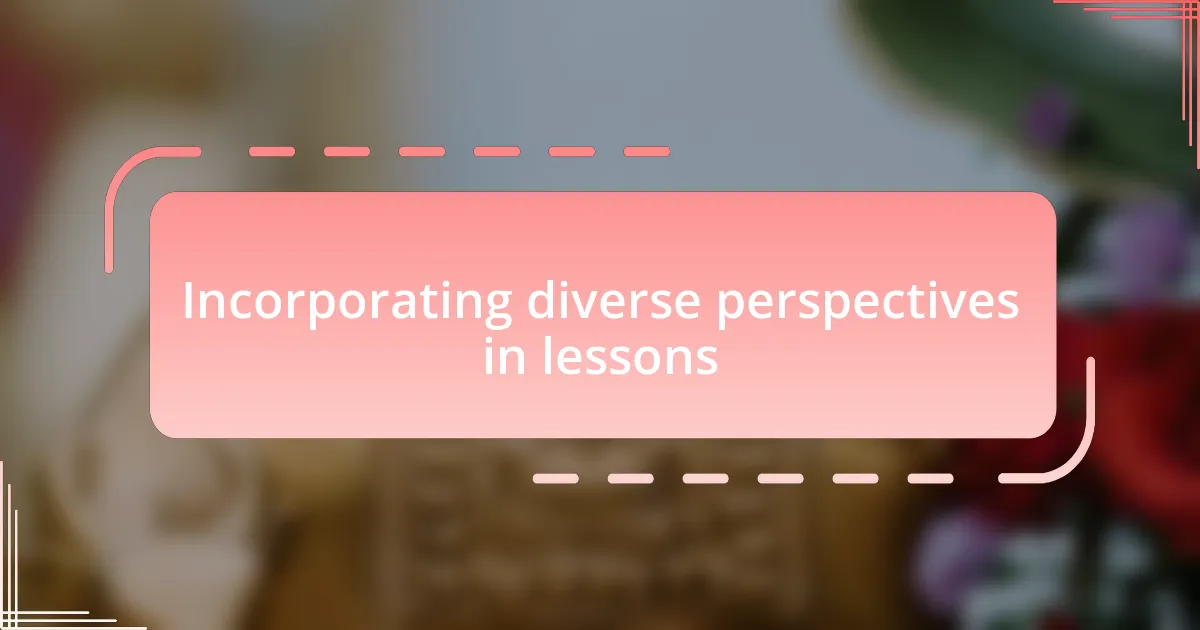
Incorporating diverse perspectives in lessons
Incorporating diverse perspectives in my lessons has been transformative. I recall a class where we examined the concept of faith through the lens of various world religions. By inviting guest speakers from different faith backgrounds, students not only heard beliefs articulated by others but also engaged in respectful dialogue that challenged their own assumptions. Have you ever noticed how such interactions can broaden one’s worldview?
Another approach I’ve found effective is using literature and stories from diverse cultures to highlight religious themes. One time, I introduced a short story from a different cultural background that resonated with universal moral questions. Students were surprised to find parallels between characters’ struggles and their own experiences, which led to deep discussions about empathy and understanding. Isn’t it fascinating how storytelling transcends boundaries and encourages critical thinking?
Furthermore, I often encourage students to explore their own backgrounds and share personal anecdotes related to religious practices. In one lesson, a student shared their own family traditions during a discussion on rituals, creating a safe space for others to do the same. This personal sharing not only fostered a sense of community but also enriched the lesson with authenticity. How powerful is it when students see their own lives reflected in the classroom?
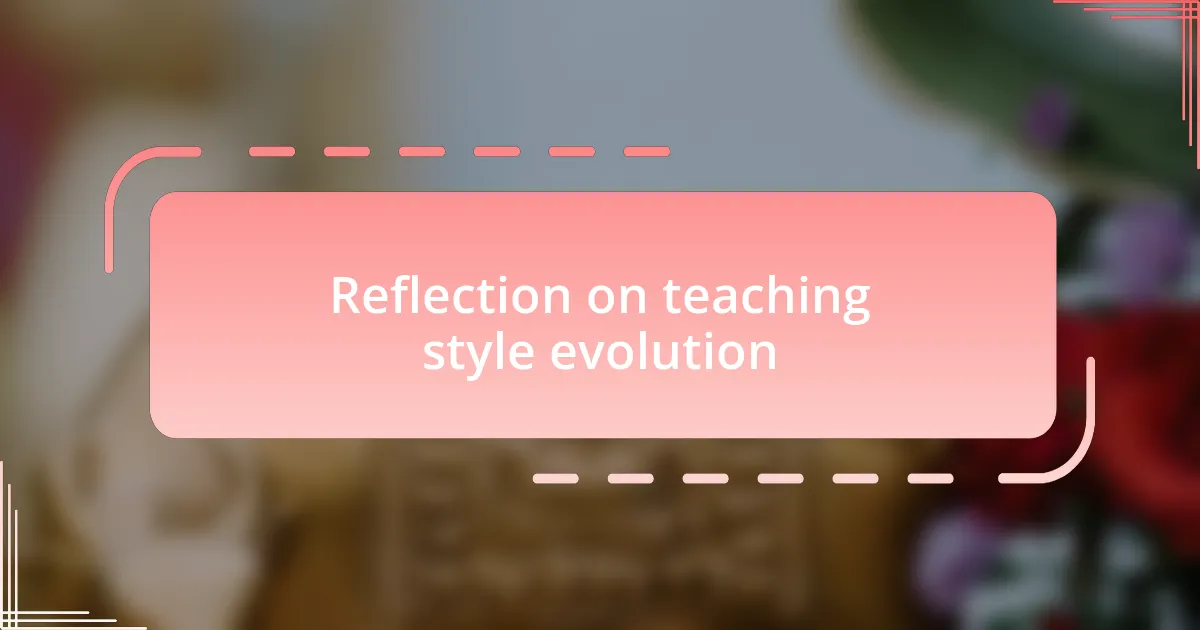
Reflection on teaching style evolution
As I reflect on the evolution of my teaching style, I recognize how pivotal moments have shaped my approach. There was a time when I relied heavily on traditional lectures, feeling confident that delivering content was enough. However, I soon realized that this method left little room for student engagement. Have you ever felt that disconnect in the classroom? It was a wake-up call that led me to seek more interactive and inclusive strategies.
Transitioning to a more participatory classroom meant embracing vulnerability. I remember a lesson where I openly shared my initial doubts about teaching religious themes. This honesty sparked a candid conversation among students, who began to voice their insecurities. It was a powerful moment; sometimes, acknowledging our own uncertainties can create a safe space that encourages others to share their thoughts. Isn’t it remarkable how vulnerability can build community and foster deeper connections in learning?
Completing this transformation required ongoing self-reflection. After incorporating diverse perspectives, I regularly assessed my lessons and sought feedback from students. One day, a student mentioned how a particular role-play exercise helped them understand a complex ideology better than any textbook could. Their insight reminded me that teaching isn’t just about imparting knowledge; it’s about facilitating experiences that resonate deeply with students. How often do we take the time to evaluate the impact of our teaching beyond grades and test scores? This reflective practice keeps my approach adaptable and responsive to their needs.